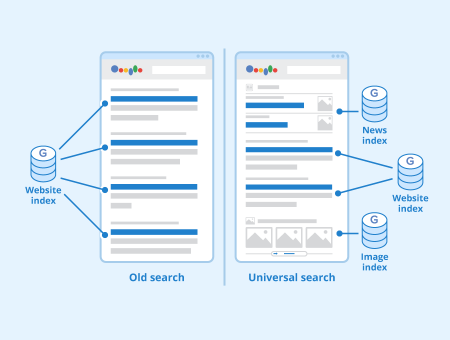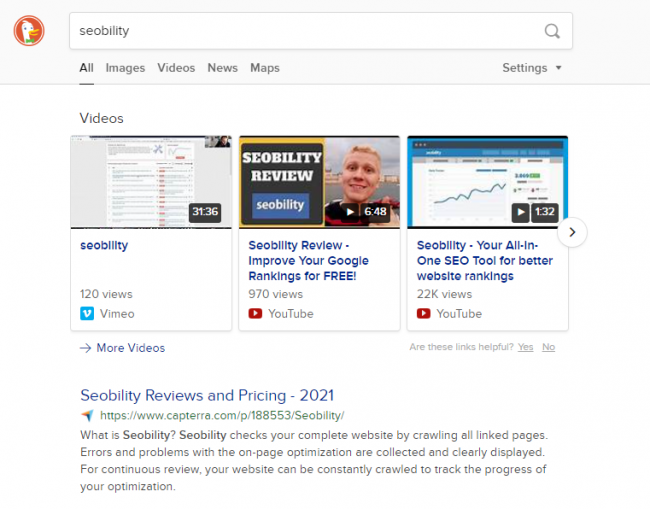What is Universal Search?

In SEO, universal search refers to search engines implementing search results from their different indexes into the main search results page. This can result in SERPS including images, videos, maps, or results from any of their other search engines. Since many search engine companies have different search engines for maps, images, videos, news, and various others, combining them into one can provide better results to users. Universal search, also called blended search or enhanced search, is a way for search engines to improve their SERPs, by providing users with more variation as well as more relevant search results.

An example of universal search results on DuckDuckGo
The history of universal search
Back in May 2007, Google announced [1] they would be introducing universal search. Universal search helped improve many of the issues that came with search engines at the time, by serving more relevant search results and showing a wider range of different types of search results in SERPs. From then on, universal search has changed immensely, with more Onebox results being introduced over time.
Today, most Google searches result in one or more Onebox results, showing you various search results from other Google search engines, like Google Images and Google News. Other search engines like Bing, DuckDuckGo, and many others have all adopted universal search as well, although to a lesser extent.
What elements make up universal search
There are various elements that can be featured in universal search results. These are:
- News
- Images
- Videos
- Maps
- Products/shopping results
- Flights
- Books
How universal search influences SEO
Universal search had a big impact on SEO, both from a user perspective and a ranking perspective. For starters, adding new elements to the SERPs took clicks away from the normal search results. This is a problem we continue to see today, with more rich results being introduced on search engines. This causes many people to consume content directly on the search results page, instead of reading the content on the content owner’s website. These new results also move certain search listings by showing Onebox results above or beneath them. This can become especially troublesome when trying to rank for terms with many alternative search results since it leaves less space for normal search results.
Universal search also came with some marketing opportunities, however, since it allowed images, videos, and other forms of content to rank in the main SERPs. This led to a greater focus on image and video SEO, among others. As the trend to more diversity and better satisfying search intent grows, rich results like rich snippets continue to bring more threats and opportunities to SEOs and webmasters.
References
- ↑ Universal search: The best answer is still the best answer Googleblog. Retrieved 18 January 2021.
Related links
- https://www.searchenginejournal.com/search-engines/universal-search/
- https://developers.google.com/search/blog/2007/05/taking-advantage-of-universal-search
Similar articles
